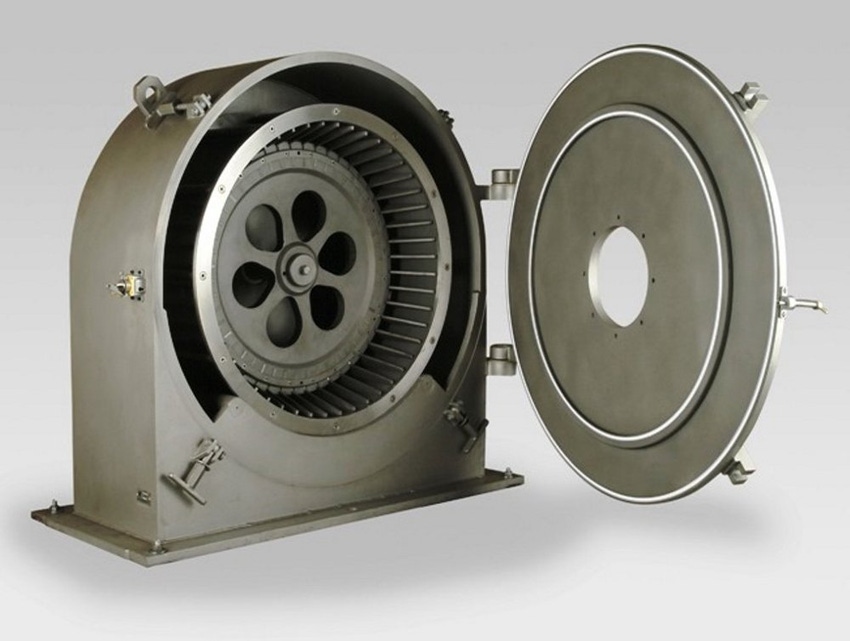Fine Grinding Solutions for the Soy Flake Industry
April 8, 2014

A Fortune 100 company that employs thousands of people on multiple continents, this diversified cooperative strives to make a difference around the world by providing environmentally conscious solutions in the markets of grain and food. In addition, it invests its time and resources into research and development of new and profitable opportunities in various markets.
This company had recently purchased a soy processing plant and had a need to reduce white soy flake to several specifically sized powders. At the time, the customer had only processed soy for the purpose of selling it as white soy flake. In-line with its goal to discover new revenue opportunities, the customer identified new market needs that could potentially be filled by further processing its soy flake.
Having identified the market need, the company explored possible paths forward leading to what it hoped would be new and potentially profitable streams of revenue. The company decided to test grinding its soy flake into finely ground soy flour from its current soy production facility. This would allow the company to begin immediately filling one of the new market niches. It also hoped to process the soy flake into soy protein for use in protein supplements, a rapidly emerging market.
Tony Lopez, the Northeast regional manager for Prater-Sterling was contacted to discuss the possibility of being able to provide a compact package that offered the high throughput rates necessary to accomplish the goals. This customer had previously purchased a competitor’s soy processing system but after installing the equipment, found that it was not capable of producing the desired results. The customer shared with Tony its vision of incorporating this new processing equipment into its current plant and eventually utilizing multiple systems in a new facility to create a large footprint in the markets of soy flour and soy protein.
The Challenge
In order to grind white soy flake to the particle distribution rates capable of producing soy flour and soy protein, four pieces of equipment were usually required. The four pieces of equipment that would typically be sold for this type of particle distribution are a G-mill, a vibrating screen, a CLM grinder, and a classifier mill.
Finding a way to utilize less equipment to accomplish the job became Prater-Sterling’s first challenge. Not only were the number of large pieces of equipment a substantial upfront investment, but the company needed to size down the equipment to be operational within its current soy processing plant.
Another primary challenge that Prater-Sterling faced, was in the processing of the soy flake without the extensive equipment to do so. Soy flake that needs to be ground into a fine powder is very fibrous. Grinding fibrous materials is difficult because the fibers tend to bend instead of reducing in size with impact. Once the material had been reduced, the customer wanted the powder classified to various sizes for different client required uses.
The Solution
Tony worked with the processing and engineering team at Prater-Sterling to come up with a customer-focused solution. The custom-engineered equipment provided by the Prater-Sterling team was designed to fit within the customer’s current soy production plant. This allowed the customer to easily manage the logistics of implementing the new equipment. The company was able to limit its line downtime and to swiftly recoup the cost of the new equipment by off-setting it with a rapid return to full production and as well as generating immediate profit from new revenue streams.
A custom process-flow diagram and plant layout were provided to the customer to illustrate how all of the proposed new equipment could work within the existing plant. The proposal was delivered to the client and verbally accepted in September of 2012, with a purchase order for the proposed system accepted by Prater-Sterling in December 2012.
The Results
Prater-Sterling engineered and implemented a grinding system capable of delivering each required particle size in a single pass, increasing processing efficiency. Samples of all the different size requirements were evaluated and capacity requirements were met. The customer promptly purchased a complete system that was delivered in its time frame and started up on time and on budget by the Prater-Sterling team.
Desired Results
Current desired results being achieved by the client include:
* Milling continuously at a rate of 6000 lb/hr
* Classify products in particle sizes of 325 mesh (44 micron) or less
* Pneumatically convey product into a filter receiver and consistently meter product for packaging
* Assure no metal contamination in the production stream
The first system worked so well that the client has since purchased two additional systems from Prater-Sterling that will be installed and fully operational within its new soy processing facility before the end of 2014. Additionally, the company has looked to Prater-Sterling again to evaluate its processing of other products in hopes of turning other low-volume profit margins into high earning markets.
The client has seen increased production line efficiency, reduced labor costs, and increased plant safety as a result of the system upgrade.
Prater-Sterling designs and manufactures equipment and systems for dry processing and bulk solids applications. For more information, visit www.prater-sterling.com.
M Series Fine Grinder
* Final product size 60 – 200 mesh
* External bearing assembly
* Dynamically balanced reversible rotor assembly
* Tight clearances between rotor & fixed grinding elements
* Dual O-ring door seal with floating door hinge for a positive seal
* Benefits
* More capacity
* Better dust control
* Precise control of finished particle size and distribution
* Simple maintenance
* Standard safety feature
MAC Series Air Classifier
* Separates dry free-flowing product from 150 - 1 micron
* Allows for very narrow particle distribution
* Control of mean particle size & cut point
* Pre-classification with cyclonic air stream
* Adjustable secondary air system for precise cuts
MAC forced vortex units process dry materials to an unmatched fineness and uniformity over a wide range of feed variations, either in closed-circuit with a conventional milling system or as independent "stand-alone" systems that incorporate feeder, fan, and product collection equipment. This particular air classifier works best on crystalline products that are dry and have a narrow distribution, preferably minus 50 micron or better. The MAC can be installed within existing air systems with little modification necessary. Available in many sizes and in either mild or stainless steel, the MAC units can also include optional equipment such as ceramic rotors and abrasion-resistant steel, rubber, polyurethane, or ceramic linings.
You May Also Like

